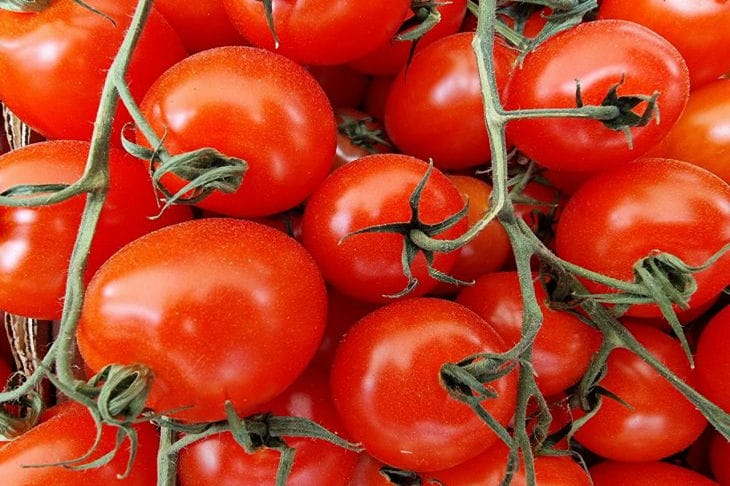What to do if there are no ovaries on tomatoes: reasons and solutions
The problem of lack of ovaries on tomatoes can upset any gardener.
Ovaries play a key role in fruit formation, so it is important to understand why they do not appear and how to deal with this.
Lack of lighting
One of the common reasons for the lack of ovaries on tomatoes is a lack of light. Tomatoes are light-loving plants, and for normal growth and formation of ovaries they need to receive at least 8-10 hours of sunlight per day.
If the plants grow in the shade or on the north side of the site, ovaries may not form.
In this case, it is recommended to transplant the plants to a more illuminated place or use additional light sources, such as phytolamps, says Anastasia Kovrizhnykh .

Inappropriate temperature
Air and soil temperature have a significant impact on the formation of ovaries in tomatoes. The optimum temperature for the growth and development of tomatoes is within 22–26°C.
At temperatures below 15°C or above 30°C, pollination and ovary formation processes may be disrupted.
On hot days, you can use awnings to protect plants from overheating, and on cold nights, cover them with special materials to maintain heat.
Incorrect watering
Watering plays an important role in the formation of ovaries. Excess or lack of moisture can negatively affect the development of plants.
Tomatoes should be watered regularly, maintaining moderate soil moisture. It is important to avoid both drying out and over-watering.
The best method of watering is drip irrigation, which ensures an even flow of water to the roots.
It is also worth considering that watering with cold water can cause stress to plants, so it is recommended to use warm water.
Nutrient deficiencies
Tomatoes require balanced nutrition for normal growth and formation of ovaries.
Deficiencies of key elements such as nitrogen, phosphorus and potassium can lead to problems with ovaries. Nitrogen is needed for green mass growth, phosphorus is needed for root system development and flowering, and potassium is needed for fruit formation.
Regular application of complex fertilizers will help provide plants with all the necessary elements.
It is important to ensure that plants do not receive too much nitrogen, as this can lead to increased green growth at the expense of flowering and fruiting.
Pollination
Tomatoes need pollination to form ovaries. In open ground, this is done by insects and wind, but in greenhouses and closed spaces, problems may arise.
If ovaries are not formed, the plants may not be pollinated enough. In this case, you can help the plants manually.
To do this, you need to shake the bushes slightly or use a soft brush to transfer pollen from one flower to another. You can also attract pollinating insects by planting honey plants near the tomatoes.
Thickened plantings
Too dense plantings can cause the absence of ovaries on tomatoes. When plants are planted too close to each other, they compete for light, moisture and nutrients, which negatively affects their development.
To avoid this, it is necessary to maintain an optimal distance between bushes when planting, as well as regularly thinning and pinching out the side shoots. This will help improve ventilation and access of light to each plant.
Diseases and pests
Diseases and pests can be a serious obstacle to a good tomato harvest. Diseases such as late blight can affect plants, causing wilting and flower drop.
Pests such as aphids and whiteflies feed on plant juices, weakening them and preventing fruit set.
Regular inspection of plants and the use of preventive measures will help protect tomatoes from diseases and pests. It is important to promptly detect and treat affected plants to prevent the spread of infections.
Incorrect agricultural technology
Errors in agricultural technology can also cause the absence of ovaries on tomatoes. Incorrect pruning, failure to observe crop rotation, use of unsuitable varieties - all this can negatively affect the harvest.
It is necessary to select tomato varieties adapted to specific growing conditions and to follow basic agricultural practices. It is also important to carry out regular agricultural activities such as weeding, loosening the soil and removing weeds.
Seasonal and climatic factors
Seasonal and climatic changes can significantly affect the process of ovary formation. Sudden cold snaps, prolonged rains or, conversely, dry periods can negatively affect tomatoes.
In such cases, it is important to monitor the weather forecast and take appropriate measures to protect plants.
The use of mulch will help retain moisture in the soil during dry periods, and coverings made of agrofibre or film will protect plants from adverse weather conditions.
Previously we talked about how to increase strawberry yields using iodine.
